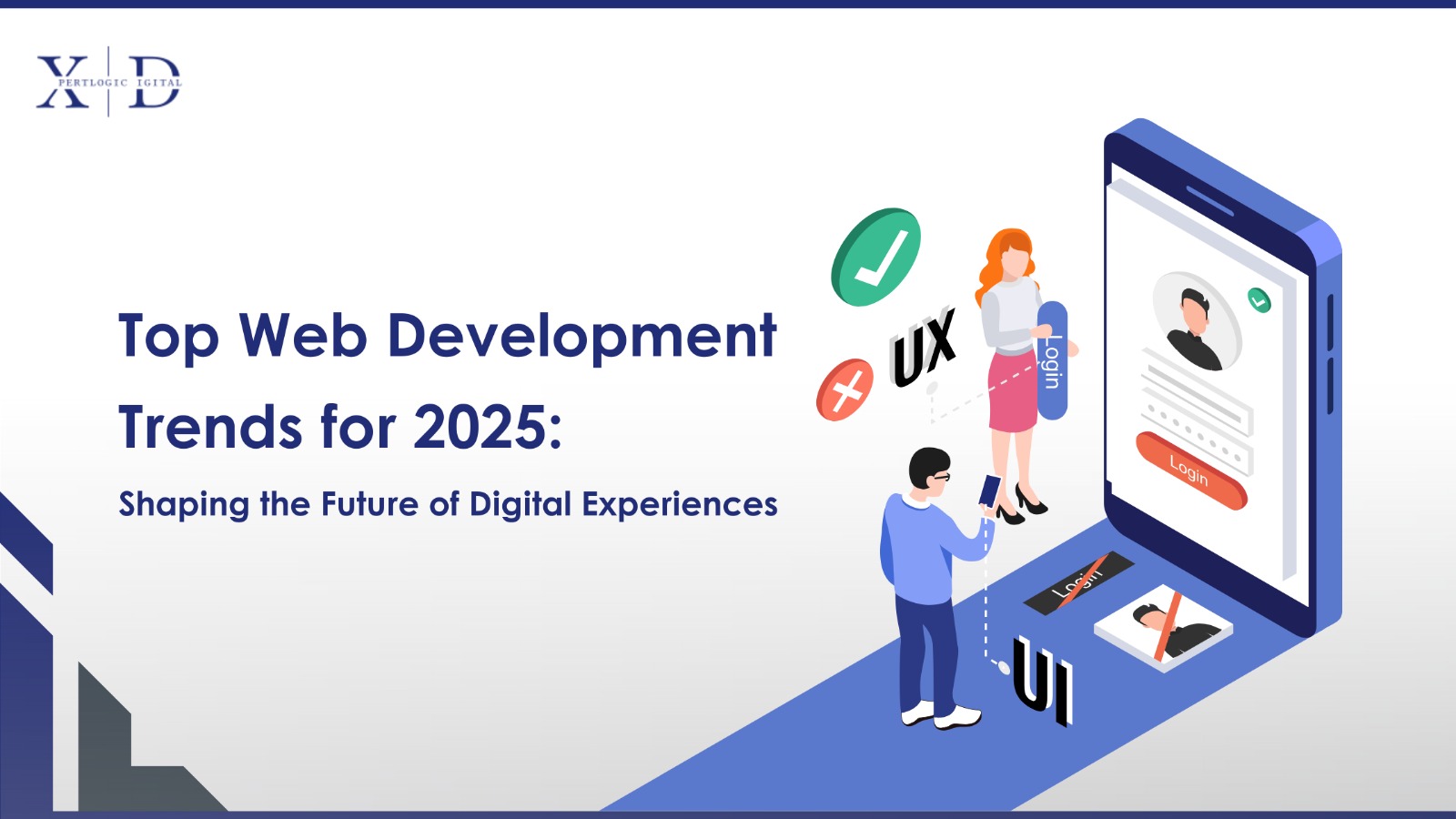
The digital landscape is ever-evolving, with web development at the forefront of technological innovation. As we approach 2025, several emerging trends are set to revolutionize how websites are built, designed, and interacted with. For businesses and developers alike, staying updated with these web development trends for 2025 is crucial to creating engaging, efficient, and future-proof digital experiences. In this blog, we’ll explore the most significant trends that will define the future of web development.
1. Artificial Intelligence and Machine Learning Integration
AI-Powered Personalization
Artificial Intelligence (AI) and Machine Learning (ML) are no longer futuristic concepts but integral parts of modern web development. In 2025, AI-powered personalization will dominate, allowing websites to offer highly tailored experiences based on user behavior and preferences. From personalized content recommendations to dynamic user interfaces, AI will enhance user engagement and satisfaction.
Chatbots and Virtual Assistants
AI-driven chatbots and virtual assistants will become more sophisticated, providing instant customer support and interactive experiences. These tools will leverage natural language processing (NLP) to understand and respond to user queries more effectively, reducing the need for human intervention and improving overall user experience.
2. Progressive Web Apps (PWAs) Dominate
Enhanced User Experience with PWAs
Progressive Web Apps (PWAs) combine the best features of websites and mobile applications, offering fast loading times, offline capabilities, and a seamless user experience across devices. By 2025, PWAs will become the standard for businesses aiming to provide robust, app-like experiences without the complexity of developing separate native apps.
Improved Performance and Reliability
PWAs are designed to be reliable and performant, even in poor network conditions. This reliability ensures that users have a consistent experience, leading to higher engagement and retention rates. The adoption of PWAs will continue to grow as businesses recognize their ability to deliver superior performance without compromising on functionality.
3. Voice Search Optimization
Rise of Voice-Activated Browsing
With the increasing popularity of smart speakers and voice-activated devices, voice search optimization will become a critical aspect of web development. Websites will need to be optimized for voice queries, which often differ from traditional text-based searches in terms of phrasing and intent.
Enhanced Accessibility and Usability
Voice search not only improves accessibility for users with disabilities but also enhances overall usability. By integrating voice-activated features, websites can offer more intuitive and hands-free navigation options, catering to a broader audience and improving user satisfaction.
4. Augmented Reality (AR) and Virtual Reality (VR) Integration
Immersive User Experiences
Augmented Reality (AR) and Virtual Reality (VR) are set to transform how users interact with websites. By 2025, AR and VR will be more widely integrated into web development, enabling immersive experiences such as virtual tours, 3D product visualizations, and interactive storytelling.
Enhanced E-Commerce and Education
In e-commerce, AR allows customers to visualize products in their environment before making a purchase, reducing return rates and increasing confidence. In education, VR can provide interactive and engaging learning experiences, making complex subjects more accessible and enjoyable.
5. Serverless Architecture and Edge Computing
Scalability and Cost Efficiency
Serverless architecture and edge computing will become more prevalent, offering scalable and cost-effective solutions for web development. Serverless computing allows developers to focus on writing code without worrying about server management, while edge computing brings data processing closer to the user, reducing latency and improving performance.
Enhanced Security and Reliability
By distributing computing tasks across multiple edge locations, websites can achieve higher levels of security and reliability. This decentralized approach minimizes the risk of downtime and enhances the overall resilience of web applications, ensuring a smooth and uninterrupted user experience.
6. Advanced CSS and JavaScript Frameworks
Modern Styling with CSS Grid and Flexbox
CSS Grid and Flexbox have revolutionized web design by providing powerful tools for creating responsive and flexible layouts. In 2025, these technologies will continue to evolve, enabling developers to build more complex and aesthetically pleasing designs with ease.
JavaScript Frameworks Evolution
JavaScript frameworks like React, Vue, and Angular will further advance, offering enhanced features and improved performance. The development of new frameworks and the refinement of existing ones will empower developers to create dynamic and interactive web applications more efficiently.
7. Motion UI and Micro-Interactions
Engaging User Interfaces
Motion UI and micro-interactions will play a significant role in enhancing user engagement. Subtle animations and interactive elements can guide users through the website, making the experience more enjoyable and intuitive. These small yet impactful design choices can significantly improve user satisfaction and retention.
Improved User Feedback
Micro-interactions provide immediate feedback to user actions, such as button clicks or form submissions. This feedback loop helps users understand the consequences of their actions, reducing confusion and increasing the overall usability of the website.
8. Enhanced Cybersecurity Measures
Robust Security Protocols
As cyber threats become more sophisticated, robust cybersecurity measures will be essential in web development. Implementing advanced security protocols, such as HTTPS, secure authentication methods, and data encryption, will protect sensitive user data and maintain trust.
Automated Threat Detection
AI and ML will play a crucial role in automated threat detection and response. By continuously monitoring web applications for suspicious activities, these technologies can identify and mitigate potential security breaches in real-time, ensuring the safety and integrity of the website.
9. Sustainable and Green Web Development
Eco-Friendly Hosting Solutions
Sustainable web development practices will gain prominence, with a focus on reducing the carbon footprint of websites. Eco-friendly hosting solutions, such as green data centers powered by renewable energy, will become more popular as businesses prioritize environmental responsibility.
Optimized Code and Resource Efficiency
Writing optimized code and minimizing resource usage are essential for sustainable web development. By reducing unnecessary scripts, optimizing images, and leveraging efficient algorithms, developers can create websites that are not only performant but also environmentally friendly.
10. Blockchain Integration for Enhanced Transparency
Secure and Transparent Transactions
Blockchain technology will be integrated into web development to enhance transparency and security, especially in sectors like finance and e-commerce. By providing a decentralized and immutable ledger, blockchain ensures the integrity of transactions and builds trust with users.
Decentralized Applications (DApps)
The rise of decentralized applications (DApps) will influence web development trends. These applications operate on blockchain networks, offering users greater control over their data and interactions. The adoption of DApps will lead to more secure and user-centric web experiences.
Conclusion: Embracing the Future of Web Development
As we look towards 2025, the landscape of web development is set to undergo significant transformations driven by technological advancements and changing user expectations. Embracing these web development trends for 2025 will enable businesses to create innovative, efficient, and user-friendly websites that stand out in a competitive digital market.
By integrating AI and ML, adopting progressive web apps, optimizing for voice search, and leveraging AR and VR, developers can build sophisticated and immersive web experiences. Additionally, focusing on serverless architecture, advanced CSS and JavaScript frameworks, motion UI, cybersecurity, sustainability, and blockchain integration will ensure that websites are not only cutting-edge but also secure, efficient, and responsible.
Staying ahead of these trends is crucial for enterprises aiming to enhance their digital presence and deliver exceptional user experiences.


